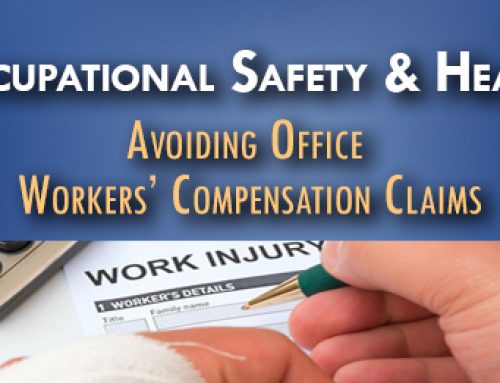New 3rd Department Case Changes the Way We Analyze 3/4’s Cases
An important message on behalf of our firm from two of our partners, Ed McIntyre and Sean Riordan:
New 3rd Department Case Changes the Way We Analyze 3/4’s Cases
___________________________________________________________________________________________________________________________________________
Dear Friends,
On Thursday April 26th, the Appellate Division, 3rd Department issued an very important decision regarding Police ¾’s claims. The determination has far reaching implications for those permanently injured in the line-of-duty. I hope you will share this information with your memberships as it only adds to the importance of their initial “Injured Employee Paperwork.”
The case, Stancarone v. DiNapoli, is the Appellate Division’s response to the Court of Appeals’ February decision in Kelly v. DiNapoli. For those not familiar with the Kelly case, the Court of Appeals found that a Police Officer, injured when a ceiling rafter collapsed upon him while he was attempting to rescue a family during a hurricane, was not entitled to a ¾’s pension. The ruling, and in a biting dissent, pointed out that the courts have been extremely inconsistent in their ¾’s determinations, specifically pointing to the varying determinations on what is, and is not, an “accident.”
The 3rd Department, who has jurisdiction over Article 78 Appeals emanating from the N.Y.S. Retirement System, acknowledged at the outset “that the standard to qualify for accidental disability retirement benefits has not always been clearly stated, with part of the confusion stemming from the use of imprecise and differing language in prior cases.” While the standard definition of “accident”, “a sudden, fortuitous mischance, unexpected, out of the ordinary and injurious in impact” is not changed under the 3rd Department’s decision in Stancarone, the 3rd Department set out a new way of analyzing these cases which will have lasting importance.
The first major change announced by Stancarone is a recognition of the Kelly decision’s statement that “requiring a petitioner to demonstrate that a condition was not readily observable in order to demonstrate an “accident” is inconsistent with case law.” The Court does away with the “readily observable” standard. In short, this directly impacts those “trip and fall” cases that have traditionally been held non-accidental when the officer could not show that the hazard they tripped and fell on was not “readily observable” and therefore could have been avoided. For example, an officer who slipped and fell on a staircase due to a juice box left on the stairs was denied his ¾’s because the judge found that the juice box was “readily observable” and therefore the officer slipping on it was his own “misstep” and not an “accident” for ¾’s purposes. Under Stancarone, the analysis of this hypothetical case is now different. Under Stancarone, the officer’s “inattention” to the juice box which caused his fall cannot be used as the reason he is denied a ¾’s pension. Even if the condition that caused the fall is readily observable, if it was not seen prior to the injury the event leading to the injury can be deemed an “accident” qualifying for ¾’s. The effective elimination of the “readily observable” standard should enable a much fairer analysis of what constitutes an “accident” and bring it more in-line with the “common sense definition of accident” as the Court of Appeals envisioned when it defined “accident” in 1982 in the case Lichtenstein v. Board of Trustees of Police Pension Fund of City of New York.
The second major analysis change announced in Stancarone is that the Retirement System must have a “specific information” in the evidentiary record that “a person in the petitioner’s position and location” could have reasonably anticipated the hazard which caused their injury. This finding goes to the “unexpected” nature of the event. For many years the Retirement System has denied ¾’s cases on the basis that an officer could have “reasonably anticipated” the hazard which caused their injury. As an example, the Court points to an officer who is injured due to a slip and fall on a slippery substance in a roadway. The Court stated unequivocally that “a blanket argument, such as “sometimes slippery surfaces exist in public roadways” is, alone, not enough to support a conclusion that the petitioner should have expected or reasonably anticipated the spot on which he or she slipped.” The court stated that a finding that the condition which caused the injury was “reasonably anticipated” must be supported by the “substantial evidence of record.”
The importance of this second change cannot be understated. Far too often an officer has been denied ¾’s because a Hearing Officer has issued a determination that the hazard presented was “reasonably anticipated” based on nothing but general conjecture and speculation. The Court now demands that the Retirement System analyze the micro-factors of the specific officer, the specific location and position of the officer at the time of the injury and explain why the hazard could have been reasonably anticipated by the individual officer.
As noted above, the Stancarone decision only adds to the importance of an officer’s initial injury paperwork. “Contemporaneous documentation” is still considered the most relevant, and accurate, description of the accident so getting it right remains the highest priority. Officer’s should take care to explain, where possible, such factors as:
–where their attention was when they were Injured – (i.e. “while searching for a suspect”);
–Lighting conditions – (i.e. “while searching for a suspect in a dimly lit back yard”);
–Their familiarity with the area- (i.e. “while searching for a suspect in dimly lit backyard that I have never previously been in before”); the specific hazard (i.e. “while searching for a suspect in a dimly lit backyard that I have never been in before I tripped and fell due to a large tree branch.”);
–A statement about the surrounding area – (i.e. “While searching for a suspect in a dimly lit backyard that I have never previously been in before I tripped and fell due to a large tree branch. I had not encountered any previous tree branches or other footing hazards in the backyard prior to my fall).
-Of course, all injuries are unique, and any other factors which may be relevant to why the officer could not have reasonably anticipated the hazard should be presented.
Understanding that many officers speed through the initial paperwork because they are 1) in pain and 2) very rarely believe that their injuries are career ending, I urge union officials and delegates to reach out to me (646-831-6229) or Ed McIntyre (631-921-5499) at any time to ensure that an officer highlights the important factors surrounding his/her injury.
Below, you will find a copy of the Stancarone decision.
http://decisions.courts.state.ny.us/ad3/Decisions/2018/523755.pdf
Be well and stay safe.
Attorney Advertising.




Leave A Comment